Deborah J. Ross's Blog, page 39
April 21, 2021
Today's Quote

What would you love if your love could ignitea sea full of stars on the darkest night?
Bernadette Miller Questions to Consider When Waking

April 19, 2021
Deborah Reads From "Four Paws To Light My Way"
"Four Paws To Light My Way" will release on May 1, 2021, and is available now for pre-order. The others will follow at monthly intervals.
Four Paws To Light My Way (May 1, 2021)
The Poisoned Crown (June 1, 2021)
"The Fallen Man" (July 1, 2021)
The Girl From Black Point Rock (August 1, 2021)
Sage Mountain (September 1, 2021 -- not yet available for pre-order)

April 16, 2021
Short Book Reviews: Romance, Magic, and Impossible Choices
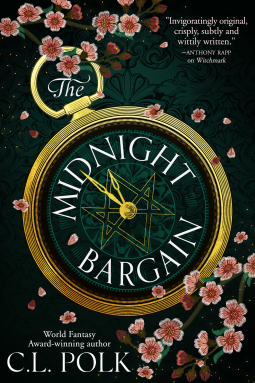 The Midnight Bargain, by C. L. Polk (Erewhon Books)
The Midnight Bargain, by C. L. Polk (Erewhon Books) Settling into a new C. L. Polk novel is akin to wrapping myself in a plushy robe, hot chocolate in hand, and then fastening my seat belt. And just after I wrote this, I learned that The Midnight Bargain has been named a Finalist for the Nebula Award. I’m delighted but not in the least surprised.
The Midnight Bargainis set is a culture with many of the same technology levels and romantic sensibilities as Polk’s previous Witchmark and Stormsong, sort-of-Western-European settings in which magic is both prized and limited. In the world of The Midnight Bargain, boys master their magic through rigorous training, but girls are all but forbidden the same knowledge, no matter how strong their talents. Their value lies in the marriage alliances they will bring to their families, through the “bargaining season” of formal, organized courtship, and the magically gifted sons they will bear. Upon marriage, a bride is locked into a magic-nullifying collar, akin to rendering her half-blind, half-deaf, and half-alive, to prevent her from carrying a child whose soul can then be stolen by a demon. Only after she has passed her child-bearing years, when it is too late to achieve any degree of mastery, will her husband, the keeper of the keys, release her.
Into this world comes Beatrice Clayton, powerfully magical and even more powerfully determined to practice her talents to the fullest. Her impoverished but genteel family counts on her to make a brilliant (meaning wealthy) match. Her only hope is to find a grimoire that will teach her how to bind a lesser, and then a greater, demon, thus qualifying her as a Magus, beyond the usual expectations of marriage.
The Midnight Bargainhas so many story elements I adore: a strong woman protagonist with a gift for friendship and a determination to live her own life on her own terms; impossible situations requiring unexpected, creative solutions; the enduring value of friendships; and self-worth valued above romance. As with Polk’s previous novels, the story swept me up, turning pages late into the night, in love with Beatrice and the other characters (well, not the loathsome toad ones). My particular favorite was Nadi, minor demon of luck, desperately hungry for human sensory experiences, at times childish and mischievous but always amusing.
At turns romantic, dramatic, and humorous, The Midnight Bargain is highly recommended.

April 14, 2021
Today's Jane Austen Quote
April 13, 2021
Police Brutality and How My Jury Found For a Black Plaintiff

As I write this, the Derek Chauvin trial is still under way, another Black man has been shot by law enforcement, and a Black Army officer has been brutalized and his life threatened. As outraged and saddened as I am by these heinous events, I also remember a time when I served as a juror on a civil trial that pitted law enforcement against a Black victim. This was many years ago, a time before Black Lives Matter, a time when it was assumed that police actions, no matter how brutal, were acceptable and justified. The case received no notice. It made no difference, except to me and, I hope, the plaintiff. But I think it’s worth telling now.
The events, as I remember them as related in the course of the trial, were that two law enforcement officers stopped a car for a broken tail light. It was at night in a fairly well-to-do area. The driver was a young Black man. In the course of the traffic stop, the officers beat him so badly as to leave him with permanent injuries and needing years of recovery. The officers would have had us, the jury, believe that their actions were necessary. The plaintiff asserted that he posed no threat and offered no resistance.
The two officers were white, and they were at least six feet tall, muscular, and clearly fit. The Black man was small, about my size (I was 5’3”), lightly built, well-spoken, a professional. As the testimony proceeded, I found myself more and more appalled by what happened, and more incredulous that two trained officers could not have found a non-violent way of managing a routine traffic stop.
After we heard the testimony, we were instructed as to the law that we must follow, which required that the officers have malicious intent, or something to that effect. We wrestled with the language of the law and with how to interpret it in light of the events. For myself, my conscience and my sense of what is right and just were far more compelling. It was luminously clear to me that the plaintiff had been horribly beaten for no other reason than being a Black man. That the officers, who were supposed to act in a responsible, fair manner, were guilty of a gross abuse of power. Through the deliberations, I argued passionately for justice as I saw it. Some of my fellow jurors were already of my opinion, others were persuaded by my arguments, and a few insisted the case did not fulfill the letter of the law and the officers were justified.
In the end, however, we found for the plaintiff. (A civil trial does not require a unanimous vote.) The jury did not award him everything he asked. There were no punitive fines, but reimbursement of medical expenses and, if memory serves, a portion of lost income. After the trial, the plaintiff’s attorney said she was not able to tell us before, but the award of just a single penny in a trial of this sort meant the plaintiff could now take the case to Federal court for civil rights violations (or a similar next move—I may be fuzzy on the exact details). I will never forget the look on the Black plaintiff’s face after we delivered our verdict. I don’t know if was hope or amazement or relief. In that moment, I felt myself part of something greater: a very small step toward justice.
There is more to this story, a post-script as it were. The judge thanked us for our service and then advised us to leave the area as soon as possible. The year was 1992. The jury in the Rodney King case was about to deliver their verdict, and protests were expected. Outside the court house, the streets were almost deserted except for police vehicles. My usual bus was not running because the route had been blocked. Eventually I made my way home on another bus, watching the fires from the freeway.
I’d like to think that what I did, that infinitesimal step towards a more just society, made a difference. The temptation, though, is to become discouraged and stop trying. I’ve learned since that giving up is a luxury born of white privilege. My Black friends don’t get to take a vacation from racism because it’s difficult or terrifying. Today, almost 30 years later, white law enforcement officers are still brutalizing Black people.
I am reminded of a teaching in my own tradition, (Pirkei Avot, Ethics of Our Fathers, part of the Talmud), attributed to first century rabbi Tarfon:
“You are not obligated to complete the work, but neither are you free to desist from it." (2:21)Let us persist, then, and accomplish what we are able, knowing that the next generation will take up the task after us.

April 12, 2021
Darkover Audiobook News
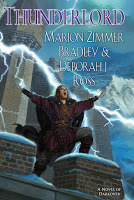
Last year, the Marion Zimmer Literary Trust made a deal with Recorded Books for all my Darkover books. I'm delighted to announce that they are now becoming available. Thunderlord is the first release, with The Fall of Neskaya, Zandru's Forge, and A Flame in Hali to follow at one-month intervals. You can find them at Audiobooks.com, Kobo, Amazon, and other stores.

April 9, 2021
Short Book Reviews: The Ratings Are Not Real
Rated, by Melissa Grey (Scholastic)

We humans are obsessed with labeling ourselves by categories and numbers: our age, our class, our weight, our IQ, our SAT scores, our GPA, and so on. In the larger world, the caste system in all its cultural versions locks the social order into place. In Melissa Grey’s world, ratings control access to education, health care, housing, and opportunity. The system was devised by John Maplethorpe, who also founded the elite high school where six students – Bex, Noah, Tamsin, Hana, Chase and Javi – find their lives change and their assumptions challenged when graffiti appears on the school’s front doors: The ratings are not real.
At first, the lives of the six students could not be more dissimilar. Bex is an overscheduled academic superstar, Hana an anorexic figure skater, Chase an athlete desperate to maintain his falling rating, Noah a shy photographer, Tamsin a Tarot-reading rebel, and Javi a professional virtual game star. Each discovers a note signed by “The Jester” and containing a riddle:
On the day of the prophet false
One mustn’t dance a forbidden waltz
A copper found and a fortune told
All beside a box of gold.
Drawn together, each of the six plays a vital role in deciphering the riddle and revealing the identity of the jester. In the process, friendships are forged and romance blooms. These are teens, right? More importantly, each comes to question the status quo and discovers their own power to change it. Reading this story as an older adult, I was infused with hope. The spontaneity, courage, and ruthless honesty of young people can indeed transform the world.

April 7, 2021
Today's Jane Austen Quote
 “But for my own part, if a book is well written, I always find it too short.” – Jane Austen, Juvenilia
“But for my own part, if a book is well written, I always find it too short.” – Jane Austen, Juvenilia
April 5, 2021
Deborah Chats About The Children of Kings
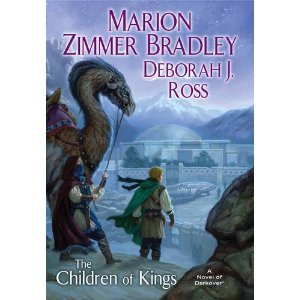 For your reading delight, here are some excerpts from a blog hop about current projects. I was finishing up The Children of Kings at the time
For your reading delight, here are some excerpts from a blog hop about current projects. I was finishing up The Children of Kings at the timeWhere did the idea come from for the book?
A couple of things. One is that Marion's original concept for Darkover centered on the clash of cultures, so I wanted to bring the Terran Federation back into the picture, but not in a nice, sedately friendly way, in a OMG terrible crisis about to descend upon us way. I also wanted to run away to live with the chieri, and Kierestelli (Regis and Linnea's daughter, from Hastur Lord) kindly offered to take me.
For this tale set mostly in the Dry Towns, I used as background not only The Shattered Chain but a very early (1961) “proto-Darkover” novel, The Door Through Space. The Door Through Space contained many elements familiar to Darkover readers, from jaco and the Ghost Wind to the names of people and places (Shainsa, Rakhal, Dry-towns). Marion was exploring a world in which Terrans are the visitors, and adventure lurks in the shadows of ancient alien cities. She drew upon and further developed this material in The Shattered Chain (1976).
These books reflected the growth of Marion’s vision, but each of them was also part of the times in which it was written. 1960s science fiction novels were often tightly-plotted, fast-paced, and short by today’s standards. Most, although by no means all, protagonists were male, and female characters were often viewed from that perspective, what today we call “the male gaze.” By the middle of the next decade, publishers were interested in longer, more complex works. Not only that, the women’s movement and the issues it raised influenced genre as well as mainstream fiction, opening the way for strong female characters who defined themselves in their own terms. If Marion had written The Shattered Chain a decade and a half earlier, I doubt it have found the receptive, enthusiastic audience it did. Her timing (as with The Mists of Avalon or The Heritage of Hastur) brilliantly reflected the emerging sensibilities of the times.
Now we live in a different world. This is not to say that the previous struggles have been resolved, but that much has changed in the social consciousness from 1976 to today. In writing The Children of Kings, I considered how Marion’s ideas about the Dry Towns (and any patriarchal desert culture) might have changed over the last three decades. The Shattered Chain, with its examination of the roles of women and the choice (or lack of choices) facing them, focused on only a few aspects of the Dry Towns culture. What if we went deeper, seeing it as complex, with admirable aspects as well as those we find abhorrent? With customs that we cannot truly comprehend but must respect, as well as those that resonate with our own? With men of compassion and women of power?
As the Dry Towns developed in my mind, I turned also to the theme that had characterized the early Darkover novels—the conflict between a space-faring technological race and the marvelously rich and romantic Domains, with their tradition of the Compact and the laran-Gifted Comyn. And now, adding to the mix, the ancient kihar-based Dry Towns.
What genre does your book fall under?
Like much of Darkover, it's technically sf, reads like fantasy. This one's a bit more like the earlier novels in that there are space ships and people from outer space and such. And chieri, native non-humans. Definitely romantic.
What is the one-sentence synopsis of your book?When Terran smugglers arm the Dry Towns warlords with blasters, it's up to the grandson of Regis Hastur to save Darkover.
How long did it take you to write the first draft of your manuscript?
I typically take about a year to a year and half from beginning the outline to handing in the manuscript to my editor. It's hard to say "first draft, second draft..." as the amount of pre-writing and "oops-in-the-middle" varies so much. I also usually leap-frog rough drafting one project and revising another, interspersed with breaks for other deadlines (page proofs, short fiction for invitational anthologies). This one was no exception.
I should add that Matt Stawicki did a fantastic job on the cover. I love this painting!

April 2, 2021
Short Book Reviews: An Unsuccessful Sequel and A Leisurely Paced Fantasy
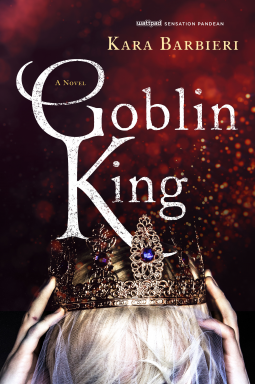
Goblin King; A Permafrost Novel, by Kara Barbieri (St. Martin’s)
I loved Kara Barbieri’s earlier novel, The White Stag. It introduced me to the world of Permafrost and the character, Janneke, and her moving and ultimately triumphant struggle from near-destruction from unbelievable trauma to healing and, ultimately, understanding and love. Goblin King is a sequel, with the same characters and world. If that’s what a reader is after – spending more time with Janneke, Soren, and the others – they’ll love this.
Much of what made The White Stag so satisfying to me was how complete a journey it made. In an era of series, it shone as a stand-alone. I suspect that its success was what led to this sequel.
Goblin King suffers from the contortions of creating a sequel to a story that was whole in itself, and the result is that it – unlike The White Stag -- descends to the level of the ordinary. The villain we thought dead really isn’t. An existential threat that didn’t exist in the first book suddenly appears. Janneke and her friends wander through one landscape after another, all of which are consistent with the semi-Norse mythological underpinnings of the Permafrost, but none of which were significant before. And in the end, there’s a cliff-hanger promise of a third volume. Added to this were numerous anachronisms – modern idioms and references that seemed jarring in this heavily myth-based world.
I found all of this profoundly unsatisfying. I’m pretty much done with this story line, although I would eagerly pick up a new one by the same author. At the same time, Barbieri is a skillful enough writer to be entertaining no matter what she undertakes. I would have liked to see her use her considerable talents in the creation of a new, complete story. I suspect that is where she will truly excel.
Quantum Shadows, by L. E. Modesitt, Jr. (Tor)
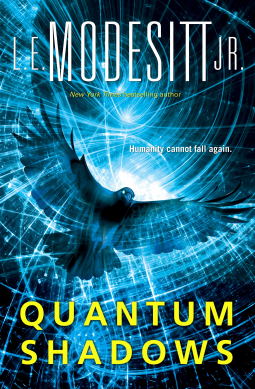
Great premise: In Heaven, an actual place, not the mystical afterlife, the major religions of mankind each have their own land governed by a capital city and ruled by a hegemon. Corvyn, known as the Shadow of the Raven, alone retains the memory of humanity’s Falls from Grace. Falls, as it happened more than once, and now, despite elaborate institutions to preserve harmony and stability, something has gone awry. The symbol of a trident has been found burned into the holy places of the various lands, and Corvyn embarks upon a quest to find out who has defiled these places. And why.
That’s the good part. Also the effortlessly competent prose and descriptive inventiveness. The not-so-good part is that Corvyn’s quest is so leisurely as to approximate sleepwalking, except for the endless (although beautifully described) scenery, inns, meals, wines, and various otherwise-insignificant characters he encounters. Except for a very few high points, the story is utterly lacking in dramatic tension or shape. It’s an enjoyable peregrination, to be sure, one I especially enjoyed relaxing with at bedtime, but I could not help thinking the whole thing could have been cut down to the length of a short story and not an overly bulky novel.





